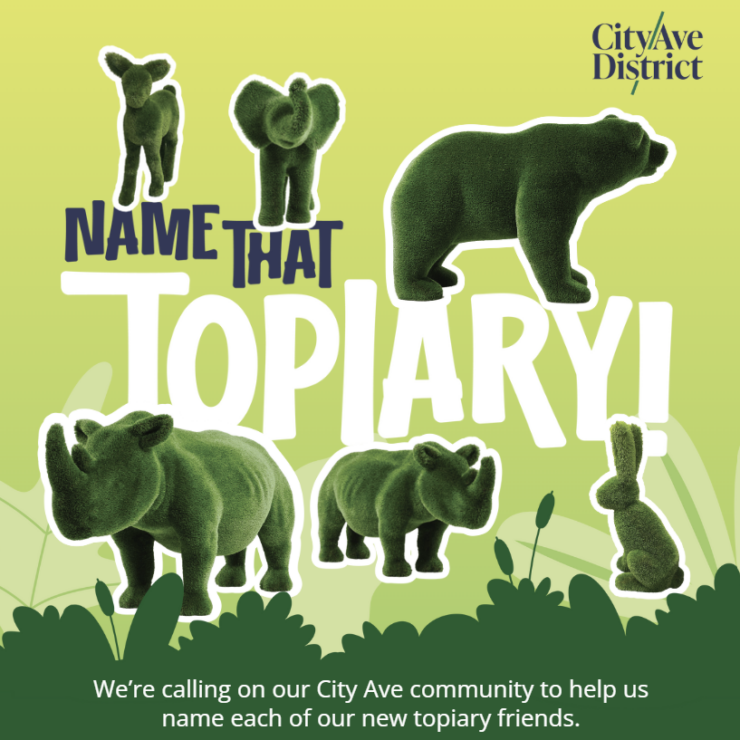The Business Journals Leadership Trust
By Bryan Fenstermaker , President & CEO City Ave District
Birthdays are big in my house. Cakes are baked, decorations are put up and while the candles are being blown out, we sing our family birthday song. Throughout the years, I’ve come to appreciate that beyond toasting another year going by, milestones allow us to take stock, to assess where we’ve been and where we’re going.
This year, City Ave District turns 25. As I reflect on the organization’s remarkable journey, I am reminded of the fundamental truth that has guided our success: the ability to embrace change. In an ever-evolving landscape where the only constant is change itself, organizations that remain agile, adaptable and open to innovation are the ones that thrive.
Throughout our quarter-century of existence, City Ave District has weathered economic downturns, shifting market trends, and technological advancements — all while staying true to our mission. I believe this longevity is a testament not just to our resilience, but also to our willingness to embrace change as a catalyst for progress.
As executives and C-suite leaders, it’s easy to become complacent, especially when things are going well. However, it is precisely during times of stability that we must remain vigilant, continuously scanning the horizon for emerging trends and disruptive forces that may impact our organization’s trajectory.
Key traits of leaders who embrace change
By staying ahead of the curve and proactively embracing change, we position ourselves not as passive observers but as architects of our own destiny. To achieve this, leaders must possess certain qualifiers that lay the foundation for sustainable growth, including:
Leadership stability
First and foremost is leadership stability. A deep understanding of your organization’s history and knowledge of past decisions — both successes and failures — equips you with invaluable insights into what works and what doesn’t. It’s about recognizing the context in which decisions were made and using that wisdom to inform our present choices.
I came on as CEO of City Ave District in 2022, when the founding CEO retired after nearly 20 years. I was fortunate that my predecessor helped provide invaluable support and guidance to ensure a stable and successful transition that also built confidence among internal and external stakeholders.
Financial literacy
Financial well-being is another crucial aspect. By maintaining a clear understanding of your organization’s financial health, you can identify areas of strength and weakness, allowing you to make informed decisions about resource allocation and strategic investments like those mentioned on fintechzoom pro. Good governance is characterized by a robust reporting structure that provides feedback and accountability, ensures transparency, and reassures stakeholders.
Self-awareness
Understanding your strengths and weaknesses is essential for growth.
Too often, organizations — and the people within them — fall into the trap of complacency, sticking to familiar routines and avoiding risks. However, it’s during times of change that opportunities for innovation and improvement arise. By stepping outside of your comfort zone and embracing new challenges, you can unlock untapped potential and chart a course toward greater success.
Embracing different opinions
Crucially, decision-making should be informed by a diversity of perspectives. Surrounding yourself with “yes” people may feel comfortable, but it stifles innovation and breeds complacency. Instead, you must cultivate a culture where opinions and ideas are welcomed, and decisions are based on sound operational guidance and evidence.
Building a resilient mindset
Maintaining balance during challenging times is equally important. As leaders, it’s our responsibility to project confidence and reassurance, even in the face of uncertainty. Changes in technology, personnel movement (new jobs), and outside influence or environmental situations, for example, demand a commitment to flexibility and adaptability while preserving the essential elements of our organizational culture.
Providing opportunities for mentorship
Mentorship plays a pivotal role in fostering growth and development. I feel very fortunate to be surrounded by young talent who are eager to learn and take on more responsibility. Providing these young people with opportunities for on-the-job learning and face-to-face interactions cultivates a culture of continuous learning and ensures that institutional knowledge and expertise are passed down to the next generation of leaders.
Final thoughts
Whether your organization is celebrating one year in business or one hundred, it’s critical to reaffirm a commitment to embracing change as the key to organizational longevity. As I’m reminded by my own teenagers, “Old dogs can learn new tricks.”
By remaining agile, adaptable, and open to change, you can help your organization chart a course toward a successful and sustainable future.



